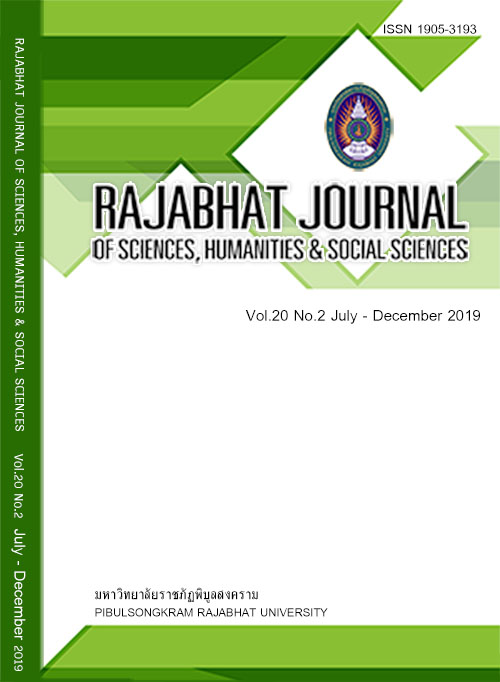A STUDY ON CHARACTERISTICS AND SAFETY PROGRAM SELECTION IN MEDIUM AND SMALL CONSTRUCTION PROJECTS
Keywords:
safety programs, safety in construction, safety managementAbstract
The two objectives of this research are 1) to study the characteristics of safety programs selection in medium and small construction projects, and 2) to find factors influencing safety programs selection in the erspective of public and private personnel. The research was conducted by selecting 15 safety programs according to the Regulations of the Department of Labor Protection and Welfare and then considering three factors, i.e., responsible persons, duration, and expenses, through interviews with construction personnel in Uttaradit, Phrae, and Nan provinces. According to the study of the characteristics of safety programs, it was found that 1) job hazard analysis used the lowest amount of responsible persons, 2) the shortest period was spent on first aid programs while the longest period was spent on job hazard analysis, 3) the smallest amount of expenses were spent on safety committees while the largest amount of expenses were spent on safe work procedures. For selecting safety programs, under the public sector’s perspective, they selected the first five activities; 1) personnel protective equipment, 2) safety orientation, 3) toolbox meeting, 4) safety promotion, and 5) emergency planning. From the perspective of the private sector, they selected 1) personnel protective equipment, 2) safety rules, 3) safe work procedures, 4) safety orientation, and 5) safety policy. When comparing factors influencing the selection of safety programs, the public sector had a perspective towards preventive program selection while the private sector had the perspective towards factors of expenses, convenience on program arrangements, and sectoral image.
References
Department of Labor Protection and Welfare.Providing Safety Plan in Construction Working Manual.Bangkok: Department of Labor Protection and Welfare; 2001.
George D, Mallery P. SPSS for Windows Step by Step: A Simple Guide and Reference11.0 Update. 4th ed. Boston: Allyn & Bacon; 2003.
Hadikusumo BHW. Overview of Health and Safety in Safety and Health Management in Construction. Bangkok: AIT; 2010.
Heinrich HW. Industrial Accident Perception. 2nd ed. London: McGraw-Hill; 1978.
Limpakornkul S. A Study of Safety Budgeting Process in Thai Construction Projects.Master Degree in Civil Engineering. Engineering: Asian Institute of Technology; 2006.
Limsila K. Unsafe acts of high-rise building construction worker.16th National Civil Engineering Academic Conference: Chonburi, Thailand; 2011.
Panpinij S. Scientific Research Techniques. Bangkok: Wittayapat; 2009.
Simaroj W, Chaleomjirarat W. Factory Engineering and Safety Management.29thed.Bangkok: Publisher of Technology Promotion Association (Thailand-Japan); 2011.
Social Security Office. Accident and Illness Statistics from Working Classified By Severity and Business Typein 2015. 2015. Available at: https://www.sso.go.th/. Accessed August 28, 2016.
Tam CM, Zeng SX. Deng ZM. Identifying elements of poor construction safety management in China, Safety Science, 2004; 42(7): 569-586.
Tan CK, Nadeera AR. Case Studies on the Safety Management at Construction Site, Journal of Sustainability Science and Management. 2014; 9: 90-108.
Wanichbuncha K. Statistics for Research. 5thed. Bangkok: Chulalongkorn University Book Centre; 2010.
Worasakdapisan A. Safety Management in Small Construction Business in Saraburi Province. Master Degree. Civil Engineering: Suranaree University of Technology; 2014.
Downloads
Published
How to Cite
Issue
Section
License
Each article is copyrighted © by its author(s) and is published under license from the author(s).










